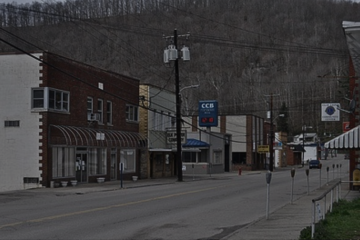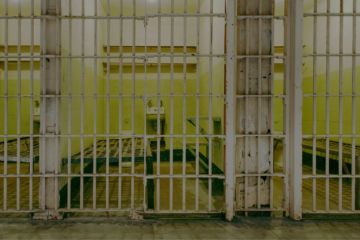by Alaina Laster
Mingo County is one of the poorest counties in the nation; 85% of the population qualifies for SNAP, which is formerly known as food stamps and has a 200% poverty threshold. Measures to ease food insecurity during the pandemic did nothing to increase this number.
Mingo County is in a food desert. This means that the opportunities to buy groceries are extremely low. Rebecca Hooker, Director of Christian Help Inc. Mingo Country, said that from where she lives, it is a 35-mile ride to the nearest Walmart, which she is able to make as someone with a vehicle, unlike the majority of Mingo’s population.
Government aid is something that has made all the difference for Mingo County. But recently, Hooker has been struggling to gain access to $12,500 of federal aid that has been waiting for them for months.
Rebecca Hooker
“Okay, so people went hungry. So that’s just, I believe, the correct word used in the situation is malfeasance. Nobody was stealing, that money didn’t go to a poor project, it just sat there,” said Hooker.
It was last year when Hooker was notified that the county would be receiving $50,000 in federal grant money. This money would be split up among the county food pantries and other similar organizations, but Hooker said it came with some “caveats.”
Hooker was told that the funding was for capacity building and not supplies. This means that the money could fund storage and renovations but could not fund food.
“Here’s the problem. There are capacity grants that have been given for food pantries in this area; we don’t need another refrigerator. We don’t need another freezer to feed. I have an example situation; a friend who runs a very large distribution in Wayne County actually knows a church that received a capacity grant, I think, for $5,000, and they got this huge industrial freezer. They can’t afford the electricity or run it. That’s—so we don’t need capacity grants, we need food,” said Hooker.
Hooker’s organization has received capacity grants in the past, and at this point, they do not have any more room within The Christian Help Center for more storage. It was not until months later that they were informed by federal agencies that they were now allowed to use funding for food.
But then, there was another hurdle, Hooker said. She was tasked with writing bids on how that money would be used within the different grocery stores. There is no competition in Mingo County because they are in a food desert. There is one Walmart, and one more expensive Food City, which at the time was closed for the next eight months for renovations.
With the help of her “trusty calculator,” Hooker logged on to the Walmart website to determine what foods she could get with the allotted $12,500. Afterward, she repeated the process with Food City. After doing all the calculations, she had the idea that the best way to spend this money would not be in a grocery store, but through organizations like Feeding America or Facing Hunger Food Bank. With their buying power, they could purchase fresh produce for the people of Mingo. However, all of this took time.
“What they should have done is written Christian Help a check for $12,500,” said Hooker.
In the end, that is what happened. Eight months later, on September 8, 2023, Hooker was given the check made out to Christian Help, and now, things are moving quickly. She is in contact with Food City, who is already working to deliver a truck of food.
The people of Mingo are lacking the resources they need to live. Christian Help is the only walk-in food pantry within a 100-mile radius and is open Monday through Friday. Hooker said meeting the community’s needs is not an easy task, but they are able to provide much more than just groceries.
“Think Goodwill, the best Goodwill you’ve ever been in, and everything is free. And when you walk in the store, that –that is the clothing area. Also, sundries, knickknacks, books, shoes, children’s clothing, some bed linens, things like that. We have a separate room, an offshoot that has hygiene products…baby supplies, including diapers and wipes, shampoo, thermometers, things like that. Also, a little formal closet for young girls who might be looking for a dress or something to go to a homecoming or prom,” said Hooker.
Christian Help is not the only organization working toward providing better for Mingo County residents. There’s Mingo County STOP Coalition (Strong Through Our Plan), WVU Extension’s Family Nutrition Program, and a few more. But there’s still not enough supply to meet demand.
The pandemic affected everyone, and Mingo County was by no means spared. In some ways, the pandemic provided relief, Hooker said. Those in the community received an increase in government assistance. The U.S. Census Bureau reported last year that COVID relief efforts and others were seen to sharply reduce childhood poverty. As the Associated Press reported in May, most extra money has disappeared. During the pandemic, SNAP recipients had their benefits boosted through an Emergency Allotment program. Now, people are left struggling.
Access to food in counties like Mingo is the perpetual challenge. Even though there are organizations like Christian Help and WVU Extension, people lack both transportation and employment opportunities.
The increased SNAP benefits were a lifeline for people in Mingo County trying to purchase groceries, said Hooker. Now those benefits have returned to pre-pandemic levels, but Hooker said that grocery prices have not returned to pre-pandemic rates.
“Products that used to be $1, and like in the dollar aisle, are now $1 and a quarter or $1.50. So that’s 25% or 50%. I don’t care how you slice it. And it was difficult. For a lot, a lot, a lot of people good news in all of this was that I did receive SNAP benefits. Yes. So those are increased. And I do know that that was a lifeline that saved many, many people from going hungry,” said Hooker.
The Department of Labor Statistics reported that food costs are up 6.7% over last year. According to Feeding America, the current average meal cost in Mingo County is $3.14, and the annual food budget shortfall is $2,827,000. This shortfall is the total annualized dollar amount the food-insecure people within the county would need to be able to meet their food needs.
Public school students do not pay for meals while in school in Mingo County. The security of a few square meals during the day is something that the pandemic took away from them. Hooker said she heard many stories of children finding their way onto the bus in the morning, because they know that is the only way to guarantee they will have food.
Courtney Harrison is a Health Educator with the WVU Extension’s Family Nutrition Program. Her job pre-pandemic included going to schools directly and teaching kids about nutrition and physical activity. During the pandemic through, her focus shifted more toward getting food to where people needed it.
“We would deliver a lot of things, that’s because transportation is a pretty big deal around here, too. A lot of areas are in food deserts. We don’t have a lot of grocery stores—only grocery store in Mingo County is in Gilbert… a lot of people kind of live pretty far away from a grocery store, so it’s making sure that people had access to food,” said Harrison.
Today, that goal of providing to those who cannot reach a grocery store remains, but it also includes providing fresh produce to as many people as they can. Recently, WVU Extension was able to have the “Kids Market at The Store” program implemented in local stores. This gave children aged 2-17 the opportunity to receive $30 in tokens and shop around for fresh produce. Everything available was grown locally by West Virginia Farmers. Each time a child went shopping, they earned a sticker. The program began in 2021 and hopes to expand throughout the state.
Harrison said that even knowing how difficult things are for so many families, “one of the bright spots for me is just really seeing how these organizations can come together and just how much love and support we have for each other around here.”
In June, the U.S. Census Bureau reported that the end of the pandemic had food insecurity rates rising nationwide, specifically with inflation rising in August. The pandemic not only made it difficult for people, specifically kids, to find the resources they needed physically, but also mentally.
Sherry Gross
Sherry Gross, the Lead Prevention Coordinator with STOP Coalition, said that during the pandemic, it was difficult for them to organize any kind of event, even virtually.
“We did a lot of Zoom trainings,” said Gross. “It was like the kids were bored. You know, even though we were getting to see each other, we lost that human connection, I guess…I feel like this school year, we are just now getting to back to some type of normalcy.”
Mingo County has faced many struggles as one of the poorest counties in the nation. The people of Mingo are dependent on inconsistent government aid. Nonprofit organizations provide what they can. These organizations are the only thing keeping thousands of people from going hungry. At the end of the day, these resources are vital to sustaining Mingo County. As Sherry Gross said, “Okay, we’re still here. We’re still doing this. The kids need this.”
Alaina Laster is a senior studying Broadcast Journalism at Marshall University. She is from Algonac, Michigan and is a Diver on Marshall’s swim and dive team. She has worked at Marshall’s student newspaper, student television news program, and their radio station. She has completed internships with The Herald-Dispatch as well as the Marshall School of Art and Design.



0 Comments